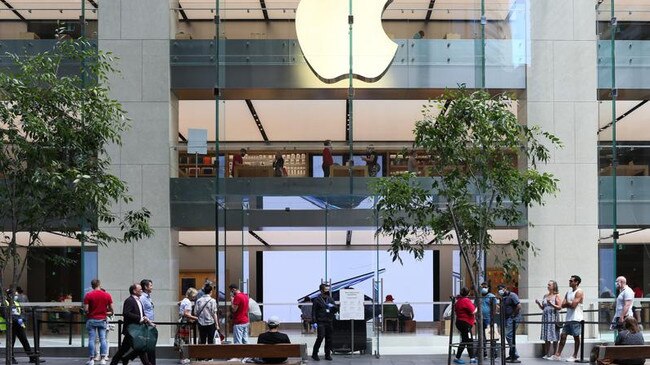How going back to school can get you a cheaper iPad, Mac or Surface Pro
Further study doesn’t just boost your career, it can also help save you money on computers, tablets and other devices. Here’s how to get a good deal.

Savvy parents and students are saving up to hundreds of dollars on new laptops and tablets, taking advantage of education discounts from the tech giants.
Back to school sales are in full swing. Apple, Microsoft and others are offering new deals to entice people to upgrade in what is expected to be a tough year as the economy slows.
The tech titans have offered such deals for decades. Apple even produced an eMac, short for educational Macintosh, in the early 2000s. But few people realise that the discounts - which can be as much as 17 per cent - are not just available to university students.
Apple and Microsoft offer cheaper deals to parents and teachers too. As a further sweetener, Apple is offering gift cards valued up to $240 on top of its education pricing, while Microsoft is offering AI courses and making its products, such as Teams, free for some students and educators.
This has helped fuel a seismic shift in classrooms during the past decade, with technology playing a greater and more costly role.

For Apple chief executive Tim Cook it forms part of the academic revolution to prepare students for the 21st century.
He has said repeatedly that “education is a great equalising force”. Microsoft chief executive Satya Nadella said: “Digital technology is transforming every industry and every aspect of society in Australia.”
But that equalisation and transformation comes at a cost. Laptops and tablets retail for thousands of dollars. One of the cheapest Apple computers, the Mac mini, costs $999 but falls to $829 with the education discount. Microsoft, meanwhile, offers up to 10 per cent off “eligible computers and accessories” for teachers and students.
Lisa Plenty, director of digital learning at Radford College in the ACT, said the school was shifting more from bring your own to college-owned devices but still encouraged students to shop around for a good deal.
“We don’t really get involved in that part of the decision making with our families,” Ms Plenty said.
“We just make some recommendations and suggest that people ask for educational discounts through whichever retailer that they’re looking at.”
Ms Plenty said technology has become a more integral part of learning rather than a novelty.
Gone are the days of students sitting in rows copying maths equations or chemistry formulas from blackboards, with their backs under strain from lugging around chunky books.
Now they have laptops or tablets with teachers using smart whiteboards among other technologies as the nation transitions to the so-called smart economy. But this can cause financial stress, particularly in the current economic environment in which the most aggressive series of interest rate hikes in 30 years have crunched household budgets.

The typical upgrade cycle for computers is three years, meaning a parent is likely to buy four computers during primary and secondary school learning - and that’s before university or other higher study.
“I got into this space of working with technology because I found that the initial introduction of technology in schools was really not making the most of what was possible,” Ms Plenty said.
“When you talk about electronic whiteboards, and some of the technology that has come into schools over time, some of it has been really complex and difficult to learn and difficult to operate. And I’ve been and I’m very much a big believer in the technology being as simple as possible. We want our cognitive load - where brain space is being taken up to be about conceptual learning and not trying to work out how the technology is going to function alongside that.
“So where I see things now as opposed to the 2012s, 2013s is that we’ve moved from really experimenting to really having a good understanding of how technology can impact and enhance learning and that is really where the emphasis needs to be.”
Still, choosing the right device can create tension. According to industry data, 49 per cent of students prefer laptops over tablets (32 per cent), while among parents it’s the reverse. This is not surprising given tablets are often cheaper.
But Ms Plenty said advancements in technology had made products more affordable.
“In the last few years, there’s been a significant shift in terms of the specifications of the basic devices. For instance, the standard iPad has some really significant specifications that weren’t there a few years ago.
“And where we used to, in the Apple space, recommend MacBook Pros probably five years ago, the Airs are now really high specifications, so we’re able to advocate for lower-cost devices that are really high quality, high functioning.”






To join the conversation, please log in. Don't have an account? Register
Join the conversation, you are commenting as Logout